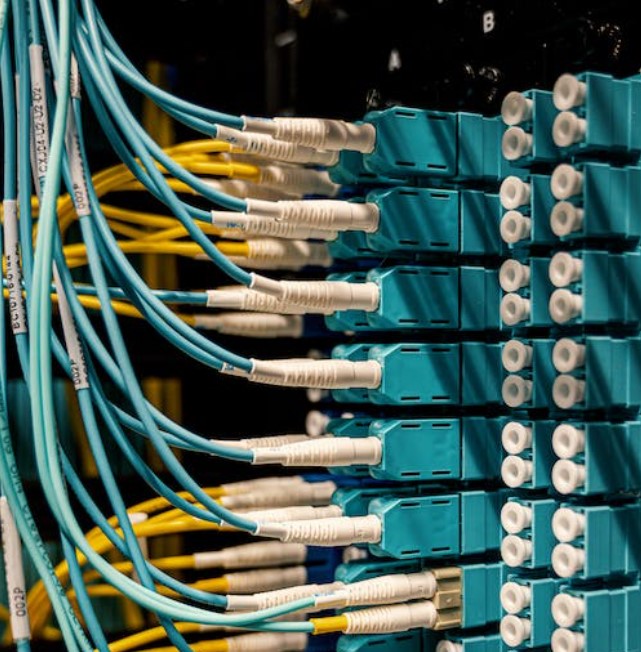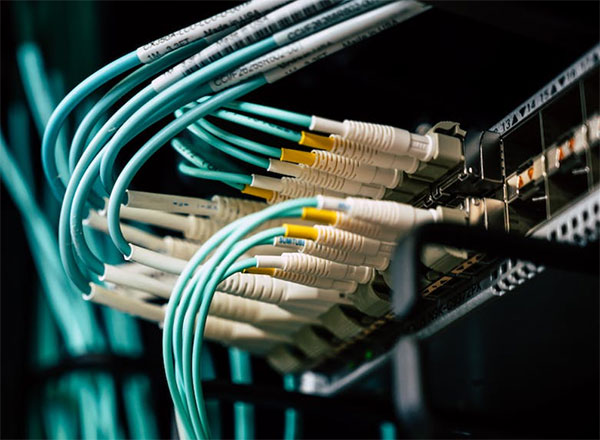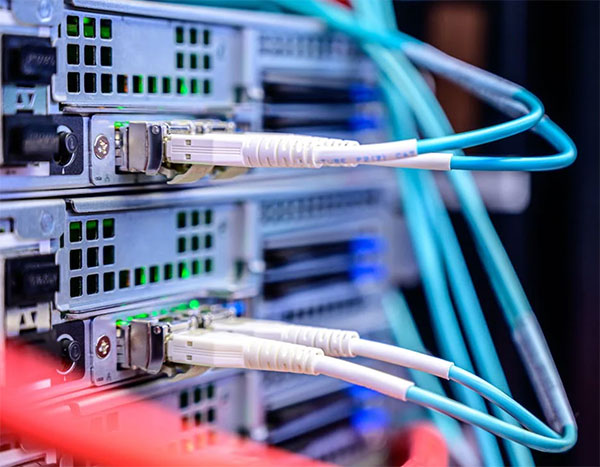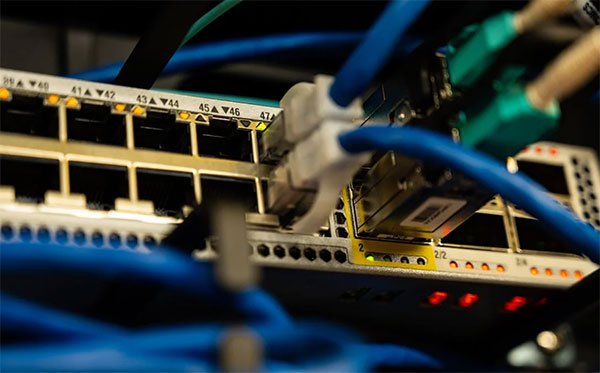If you’ve been reading about fiber optic networks, you may have heard of optical burst switching. This might sound like mere technical jargon, but it’s a powerful technology. Let’s talk about what it is and the opportunity it provides.
Optical burst switching (OBS) is a technology that allows an optical network to behave like a packet-switched network. It allows for dynamic bandwidth allocation and more efficient transmission of intermittent traffic. However, it’s less well-suited for applications that require a continuous connection.
What is OBS?
In a traditional circuit-switched network, a dedicated path is established between the sender and the receiver for the duration of the communication. This is similar to a telephone call, where a dedicated line is established between the two parties. However, in a packet-switched network, data is divided into small packets and sent over a shared network. Each packet is then routed to its destination independently. This is similar to the way data is sent over the internet.
Optical burst switching (OBS) is a networking technology that combines the benefits of both circuit-switched and packet-switched networks. It is designed to optimize the use of optical bandwidth in WDM (wavelength-division multiplexing) networks. In these systems, a single optical fiber can carry multiple wavelengths of light. Each wavelength, in turn, can be used to transmit data.

OBS combines the best of both worlds. It first uses a circuit-switched network to establish a dedicated path between the sender and the receiver. Then it uses packet-switching to transmit data over that path. This allows for significantly more efficient use of bandwidth. It also reduces the amount of signaling overhead required to establish and tear down connections.
In OBS, data is transmitted in bursts, with each burst being sent over a dedicated wavelength. The sender sends a short control packet, called a burst header, to the receiver. This header contains information about the burst, such as its size and the wavelength it should be sent on. The receiver then sends an acknowledgement packet back to the sender. This signal serves as an “all clear” which indicates that it is ready to receive the burst. Once the burst has been successfully transmitted, the sender sends another burst header for the next burst.
OBS vs. OCS vs. OPS
Now that we’ve talked about how OBS works, let’s talk about some alternative ways of transmitting data. We’ll start with optical circuit switching (OCS), which is an older standard. OCS works more on the hardware level, and relies on a single light wavelength. In OCS, an optical switch physically sets up a circuit that links two devices. The signal can then flow freely in either direction.
OCS is effective for applications where there’s a relatively consistent flow of data. However, it also suffers from some drawbacks. If the signal is erratic, an open circuit could be mostly dead bandwidth most of the time. That’s just a wasted resource. It also takes time to establish and tear down connections.
OBS technology alleviates these issues, but it still isn’t perfect. Ideally, all data that begins as optical should remain optical to maximize efficiency. Unfortunately, header packets still can’t be processed in their optical form. This means that routers and switches have to convert the optical signal to electrical to read the header. After reading the header, the system converts the electrical signal back to optical and sends it on its way.
This is inefficient. Optical packet switching (OPS) technology is a system where the optical header is processed as-is. In other words, there’s no need for network devices to convert packets back and forth from optical to electronic. It’s far more efficient, and allows networks to flow more smoothly. Sadly, OPS technology is purely in the experimental phases. It may be several years before we see any mass deployment of this bleeding edge technology.

Pros and Cons of Optical Burst Switching
Now we know more about optical burst switching and how it differs from other optical technologies. But why would you choose to implement OBS versus sticking with an OCS system?
One of the key benefits of OBS is that it allows for efficient use of bandwidth. It only allocates bandwidth for the duration of the burst transmission, then tears down the connection. By contrast, in traditional circuit-switched networks, bandwidth is allocated for the entire duration of the communication. This ties up bandwidth even if there is no data being transmitted. It means you end up having to install more bandwidth to do the same amount of work.
Another benefit of OBS is that it makes establishing and terminating connections more efficient. In a traditional circuit-switched network, there’s a separate signaling channel. This channel is used exclusively for setting up and ending connections This can consume a significant amount of bandwidth. In OBS, the signaling is integrated into the data bursts, reducing the amount of bandwidth required.
OBS also allows for dynamic bandwidth allocation, where bandwidth can be reallocated to different users as needed. This can be useful in situations where the traffic is highly variable, such as in a content delivery network (CDN). A CDN’s demand for certain content can fluctuate rapidly, and an OBS system can keep up.
However, OBS also has some limitations. One of the main limitations is that it is only appropriate for intermittent traffic, where data is transmitted in bursts. This makes it less suitable for applications such as video conferencing, where continuous communication is required.
Another limitation is that OBS is more complex to implement than traditional circuit-switched or packet-switched networks. This is because it requires the use of specialized hardware and software. This software coordinates between the sender and the receiver to establish and tear down connections.

How Does Packet Switching Work?
Packet switching is a method of transmitting data across a digital network. Data is split into little pieces called packets, which are easier to transmit than larger chunks or whole files. Each packet is made of two parts: the header and the payload.
The header contains essential information about the packet. It identifies the sender and the destination address, along with other vital details. For example, it will tell the receiver how the packet fits in with the other packets. Switches and routers use the addressing information to direct the packet across the appropriate path.
Packet switching is by far the most common method of sending data across a network. That’s because it’s so efficient. A channel is only tied up when there are no packets actively being sent across it. As soon as a packet is sent, the channel is available for another. That way, multiple devices can communicate through the same channel at the same time.
This is fundamentally different from circuit-switching, which is a hardware-based technique. It involves physically creating a dedicated channel between sender and receiver. OBS is unique in that it provides a combination of the benefits of both.

Benefits of Packet Switching
So, what makes packet switching the preferred method of transmitting data? Here are a few reasons:
- It’s efficient. Instead of working like a telephone switchboard, it works more like a post office. Individual packets come in from various sources and are distributed to different destinations.
- It takes less time. There’s no need for extra time to constantly set up and terminate connections.
- It uses fewer resources. You won’t have to tie up channels with devices that are using little if any bandwidth. Channels are available as soon as a packet gets through.
- It’s far more flexible. With circuit switching, individual connections can only be used for a single purpose. So if you’re on a VOIP call, you can’t also be downloading a file from the web. Packet switching allows you to use one connection for multiple purposes simultaneously.
- It produces fewer errors. With packet switching, individual packets can be held in memory at network nodes. They can then be scanned for errors before transmission.
- It works well with two-way traffic. Circuit switching can sometimes have trouble with two-way traffic if both devices try to send data simultaneously. With packet switching, the data can simply take another path.
- It’s more affordable. Because it’s more efficient, a packet switching network requires less equipment to do the same work. This translates into lower costs for anyone installing a network.
- It was designed for data. Circuit switching was originally developed for voice communications. It’s great technology if you’re on a telephone call. But for data, it’s like using the bottom of a screwdriver as a hammer. It’s just not the right tool for the job. Packet switching was developed specifically with the internet in mind.
Final Thoughts
OBS is a networking technology that combines the benefits of both circuit-switched and packet-switched networks. It allows for efficient use of bandwidth, reduces the amount of signaling overhead, and allows for on-the-fly bandwidth allocation. However, it is only suitable for intermittent traffic and is more complex to implement than traditional networks. OBS is a promising technology for future high-speed networks, where the demand for bandwidth is rapidly increasing.
Meet Ry, “TechGuru,” a 36-year-old technology enthusiast with a deep passion for tech innovations. With extensive experience, he specializes in gaming hardware and software, and has expertise in gadgets, custom PCs, and audio.
Besides writing about tech and reviewing new products, he enjoys traveling, hiking, and photography. Committed to keeping up with the latest industry trends, he aims to guide readers in making informed tech decisions.

